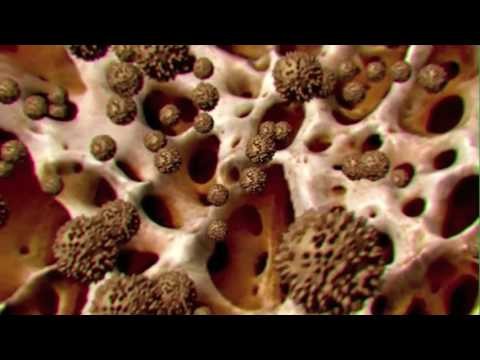By Dane Lorica, | December 02, 2016

Scientists have discovered a new way to destroy cancer cells using nanocages. (YouTube)
A breakthrough research has introduced a blueprint that signals human cells to create "nano-cages," which can control viruses not to destroy the body but to deliver drug treatment to tumor sites. The study from the University of Washington and University of Utah aims to utilize microbes as a new way of treating illnesses within the body.
Like Us on Facebook
The co-chair of the University of Utah Department of Biochemistry, Dr. Wesley Sundquist, said the goal of the study is "shifting perception from viruses as pathogens, to viruses as inspiration for new tools."
The study is based on the fact that by nature a viral organism transfers its infectious properties to surrounding cells. As part of the experiment, researchers developed blueprints resulting in a soccer ball-shaped nanocage capable of assembling by itself. The researchers introduced additional viral genetic codes to pack the transporters inside a cell membrane.
The development of nanocarriers is a result of decades of experiments and investigations including Sundquist's study on the human immunodeficiency virus (HIV). Sundquist said that the successful system provides a better understanding of how viral budding takes place. The researchers learned that to establish a successful delivery system, three essential viral properties should be incorporated including the ability to attach to membranes, assemble by itself, and be extracted from cells. They found that errors in these codes will result in termination of transportation,
Dr. Neil King, who is a professor at the University of Washington Institute for Protein Design, said that the experiment opens up the possibility of developing new ways to resolve health problems.
"We are now able to accurately and consistently design new proteins with tailor-made structures," he said.
The lead author of the study, Jorg Votteler of the University of Utah, said that the experiment needs "fine tuning." The scientists explained that modification of the system remains possible provided that all essential properties of viruses are retained.
Meanwhile, another study led by Miqin Zhang involved transporters made of synthetic materials capable of carrying not just drugs but also magnetic staining particles that guide surgeons during tumor extraction. Since cancer cells utilize the human body to block treatment, current therapies for neoplasm such as radiation or chemotherapy result in the damage and removal of healthy cells.
With nanocages, chemotherapeutic drugs can directly target tumor sites to extract their toxic properties. Zhang explained that "most chemotherapy drugs have complex structures - essentially they're very fragile and they do not good if they are broken by the time they reach the tumor. This makes the synthetic transporters efficient in addressing the condition."
Zhang's team used healthy mice injected with nanocarriers containing drug cargo. They found that the animals remained healthy. "This would indicate that the nanocarriers themselves do not trigger an adverse reaction in the body, and that the loaded nanocarriers are keeping their toxic cargo shielded from the body," the researchers said.
The study on virus-inspired nanocages needs to go further so scientists can assess if the system can stand long journeys inside living animals while transporting therapeutic drugs. Sundquist said "as long as we keep pushing knowledge forward we can guarantee there will be good outcomes, though we can't guarantee what or when."
-
Use of Coronavirus Pandemic Drones Raises Privacy Concerns: Drones Spread Fear, Local Officials Say

-
Coronavirus Hampers The Delivery Of Lockheed Martin F-35 Stealth Fighters For 2020

-
Instagram Speeds Up Plans to Add Account Memorialization Feature Due to COVID-19 Deaths

-
NASA: Perseverance Plans to Bring 'Mars Rock' to Earth in 2031

-
600 Dead And 3,000 In The Hospital as Iranians Believed Drinking High-Concentrations of Alcohol Can Cure The Coronavirus

-
600 Dead And 3,000 In The Hospital as Iranians Believed Drinking High-Concentrations of Alcohol Can Cure The Coronavirus

-
COVID-19: Doctors, Nurses Use Virtual Reality to Learn New Skills in Treating Coronavirus Patients







